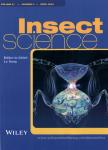Two sides of a coin: host-plant synchrony fitness trade-offs in the population dynamics of the western spruce budworm
Two sides of a coin: host-plant synchrony fitness trade-offs in the population dynamics of the western spruce budworm作者机构:Natural Resources Canada Canadian Forest Service Laurentian Forestry Centre Quebec Canada Natural Resources Canada Canadian Forest Service Pacific Forestry Centre Victoria British Columbia Canada
出 版 物:《Insect Science》 (昆虫科学(英文版))
年 卷 期:2018年第25卷第1期
页 面:117-126页
核心收录:
学科分类:0710[理学-生物学] 0830[工学-环境科学与工程(可授工学、理学、农学学位)] 07[理学] 0904[农学-植物保护] 0901[农学-作物学] 0713[理学-生态学]
主 题:budburst budworm feeding fitness synchrony
摘 要:Conifer-feeding budworms emerge from overwintering sites as small larvae in early spring, several days before budburst, and mine old needles. These early-emerging larvae suffer considerable mortality during this foraging period as they disperse in search of available, current-year buds. Once buds flush, surviving budworms construct feeding shelters and must complete maturation before fresh host foliage senesces and lignifies later in the summer. Late-developing larvae suffer greater mortality and survivors have lower fecundity when feeding on older foliage. Thus, there is a seasonal trade-off in fitness associated with host synchrony: early-emerging budworms have a greater risk of mortality during spring dispersal but gain better access to the most nutritious foliage, while, on the other hand, late-emerging larvae incur a lower risk during the initial foraging period but must contend with rapidly diminishing resource quality at the end of the feeding period. We investigate the balance that results from these early-season and late-season synchrony fitness trade-offs using the concept of the phenological window. Parameters associated with the variation in the phenological window are used to estimate generational fitness as a function of host-plant synchrony. Because defoliation modifies these relationships, it is also included in the analysis. We show that fitness trade-offs characterizing the phenological window result in a robust synchrony relationship between budworm and host plant over a wide geographic range in southern British Columbia, Canada.



